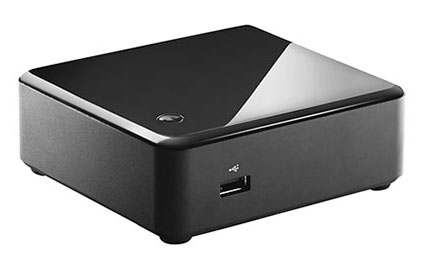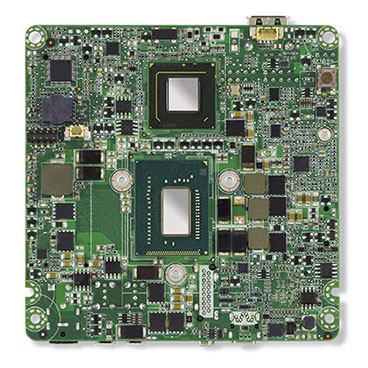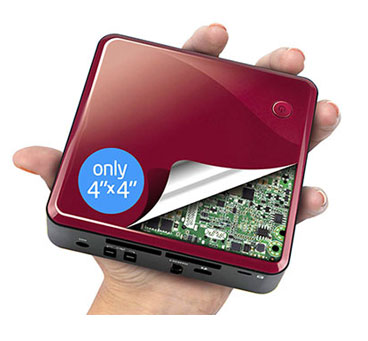Our Aim
To provide you with an overview on New And existing technologies, hopefully helping you understand the changes in the technology. Together with the overviews we hope to bring topical issues to light from a series of independent reviewers saving you the time And hassle of fact finding over the web.
We will over time provide you with quality content which you can browse and subscribe to at your leisure.
TekSpek 's
Intel Next Unit of Computing (NUC)
Date issued:
A new breed of small-form-factor
It's a great time to be interested in small-form-factor computing. Once a niche hobby for home-theatre PC enthusiasts, small-form-factor designs are now capturing everyone's imagination thanks in no small part to the Raspberry Pi phenomenon.
And these compact, affordable designs are arguably what's needed to kickstart a stagnant desktop PC market. Underscoring the fact that pint-sized systems are going to help shape the industry for years to come, chip giant Intel has introduced in its own vision for ultra-compact PCs with a new form factor dubbed The Next Unit of Computing (NUC).
Based around a small PCB that measures just 10cm square, NUC blurs the lines of what a compact PC can and cannot do by embedding a third-generation Intel Core processor - codenamed Ivy Bridge - that's more than capable of running modern operating systems such as Microsoft Windows 8. The entire system is enclosed in a tiny case that fits easily into one hand, and, sensibly, Intel provisions for VESA mounts that enable a NUC to be connected to the back of a monitor.

Size isn't everything
Take away the chassis and the beating heart of the NUC is the integrated PCB, shown below. It has a pre-soldered Intel 'Ivy Bridge' Core i3-3217U processor sat on top of an Intel QS77 chipset. The current physical implementation requires both CPU and core-logic sockets on the motherboard, taking up valuable room. Intel's next-generation 'Haswell' architecture is to integrate the core-logic into the chip itself, providing the means by which to design an even-smaller NUC.

Coming back to the present, note that the CPU is intended to be cooled by a 40mm fan; the off-the-shelf unit is therefore not silent, although third-party chassis are being designed with passive heatsinks. Careful component positioning enables Intel to miniaturise the motherboard down to an impressively-small footprint and at the time of writing, two pre-built NUC PCs are available - the DC3217IYE and DC3217BY.
In terms of standard interfaces, the DC3217IYE NUC carries up to five USB 2.0 ports - though only three are plumbed out externally on the chassis - two HDMI outputs for dual-display computing; Gigabit Ethernet; a half-height mini-PCIe slot; a full-height mini-PCIe slot, and space for two DDR3 SODIMM modules. The larger mini-PCIe slot accepts solid-state drives presented in an mSATA form factor, while the smaller slot can be populated with a WiFi card for wireless networking.
Meanwhile, the DC3217BY NUC is different insofar as one of the HDMI outputs is substituted for a new-fangled Thunderbolt port. Common to both variants, the ever-so-small size of the NUC means that power is fed through an external power supply.
Intel's duo of pre-built NUCs are described as barebones units comprising of the PCB - with integrated processor - chassis and external power supply. Everything else is extra, meaning that a fully-built system will still require the user to purchase memory, WiFi card(s) and storage, at the very least. Alternatively, specialist retailers such as Scan Computers allow consumers to purchase the PCB - again with embedded CPU - as a standalone product for integration into a chassis of choice. Building your own NUC is therefore a possibility, though there's obviously limited upgrade potential as a result of its size.

Summary
Intel realises that it must take the lead in invigorating the desktop PC industry. A first step to achieving this is through the release of a small-form-factor system known as the NUC. Tapping into the CPU, graphics, and outputs goodness of a modern-day Core i3 processor, the NUC can be thought of as possessing the qualities of a mainstream laptop, albeit without a display as standard.
The chip giant has commented that the current-generation NUC is the first of many, with subsequent models using a number of different specifications, ranging from even lower-power offerings to genuinely performance-based NUCs harnessing potent Core i5 chips. It's too early to tell whether Intel's small-form-factor initiative has the necessary appeal to succeed, but it's heartening to see new approaches to reinvigorate the desktop PC market.
Scan Computers is a premier Intel partner and is stocking both versions of the Intel Next Unit of Computing, as well as standalone Intel NUC mainboards. Please click here for more details.